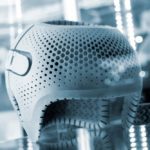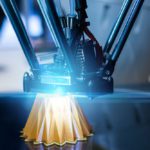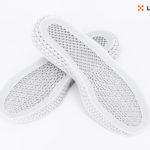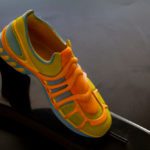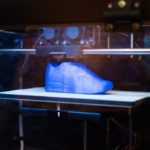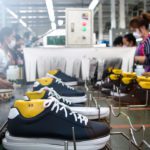Footwear Team
Footwear Manufacturing Technology: Benefits of Smart Factory 3D Printing
Smart Factory3D printing enables companies to reduce labor steps, increase design freedom, and create opportunities for customization—here’s how:
Read MoreApplications of 3D Printing in Sports and Sports Medicine
When it comes to sports and sports medicine, using high-performance products can enhance athlete performance and recovery. 3D printing in sports and sports medicine products brings more customization and durability…
Read MoreHow to Make Manufacturing More Sustainable With 3D Printing Technology
Every year, American manufacturers generate and dispose of 7.6 billion tons of solid waste, according to data released by the EPA. Despite being recyclable, a significant portion of that waste…
Read More3D Printing Applications in the Footwear Manufacturing Industry
The projected revenue increase demonstrates the continued adoption of additive manufacturing processes by footwear manufacturers. 3D printers have been available since the 1980s. However, many industries have only recently integrated 3D printing solutions into their production processes, as significant advances in machines, material, and software are not only meeting industry requirements but also enabling greater innovation with better performance production parts. Today many footwear companies use 3D printers to optimize design, prototyping, and full production.
Read MoreHow to Automate Footwear Manufacturing
In recent years, advancements in 3D printing technology are streamlining the manufacturing process. Footwear companies are leveraging 3D printers to optimize operations, enabling fully-functional prototypes and increased design freedom. 3D printing improves the footwear manufacturing process with greater automation, and 3D printed footwear is projected to globally generate over USD 1 billion by 2023 and USD 6.5 billion by 2029.
Read MoreHow 3D Printing Is Improving the Footwear Manufacturing Process
Traditional footwear manufacturing is a time-consuming process that often limits designs. With high tooling costs and production limitations, initial designs, tooling, and prototyping can take months to complete and require significant investments. The final product design must fit the production method, and processes, like injection molding, can constrain the design. Products need to be developed so that tools can be built for mass production. Designers who work with injection molding must often reconfigure their product layouts to meet production criteria after the prototyping stage.
Read MoreFootwear Manufacturing Industry Analysis: Evaluating the Impact of 3D Printing
By the end of 2020, the total revenue connected to 3D printed footwear production is projected to reach $1.4 billion, an upward trend over the last few years. According to…
Read MoreHow to Enhance Sustainability in Footwear Manufacturing
The short lifespan of footwear, especially running shoes, leads to large amounts of waste. Most shoes are non-biodegradable and end up in landfills where they can take 30 to 40 years to decompose. 3D printing can increase sustainability in footwear manufacturing and the final consumer product.
Read MoreFootwear Manufacturing Plant Costs and Considerations
3D printing, either in-house or outsourced to a contract manufacturer, helps footwear companies control costs, manage their risk, and create a broader range of higher quality products. If you’re looking to partner with a contract manufacturer or expand your existing footwear manufacturing operations, choose a partner or process based on 3D printing to help control costs and reduce risk.
Read More
